Smart Internet of Things - who is he and what does he eat with?
The trend of the Internet of things is gaining popularity. Most often, the concept of the Internet of things is inextricably linked to something clever: smart homes, smart transportation, smart enterprises ... But when you look at this intelligence more attentively, you often get disappointed: remote control of a light bulb in a house is automation at best, but not smart house. It seems that the Internet is not so clever ... And what is the smart Internet of things?
In general, the history of the Internet can be divided into 4-5 stages, now we are in the era of the Internet of things (Internet of things, IoT). Briefly, it can be described as follows: an increase in the number of devices that interact not only with users, but also with each other. Those. each coffee maker has access to the network - but this is why it needs this access, only to be solved.
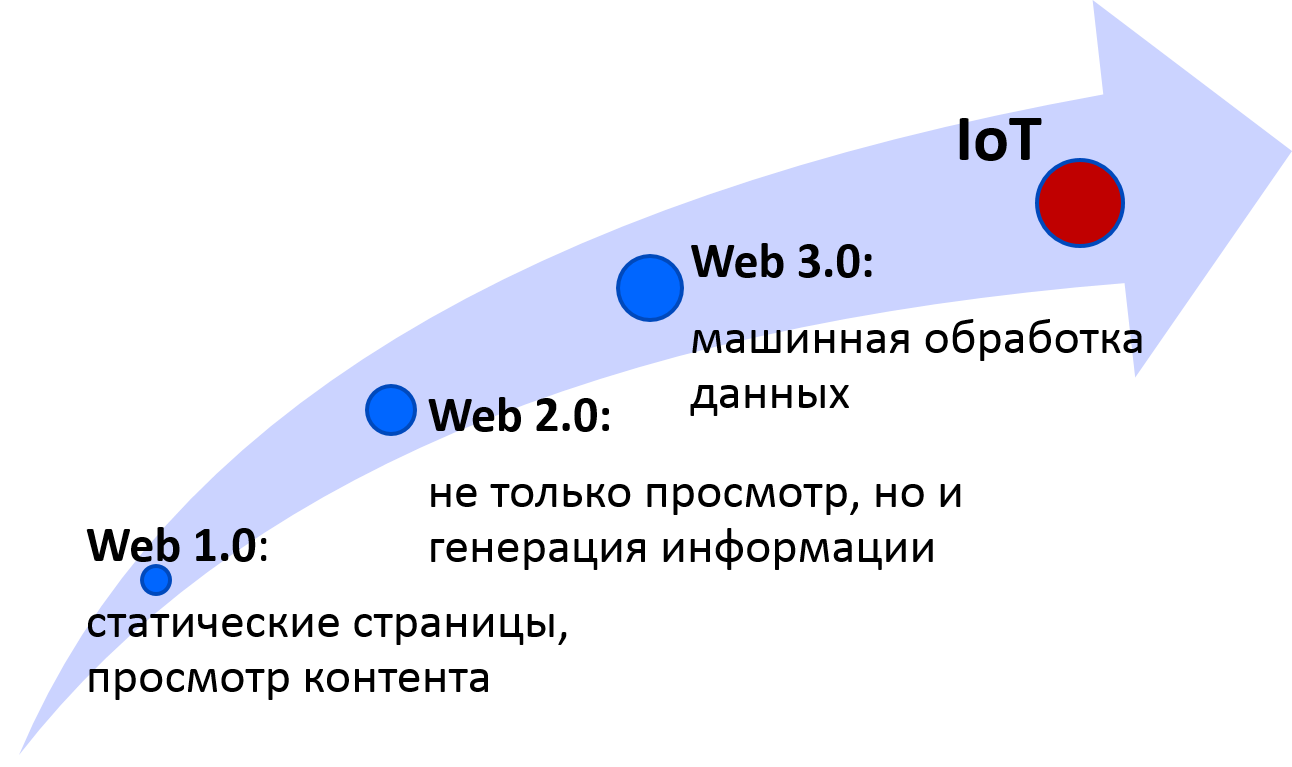
The emergence of the Internet of things is quite an expected step, because laziness is the engine of progress. Why go to the TV to switch channels, if you can come up with a remote control, why press a button on the coffee maker, if you can do it in a smartphone or set up a rule so that coffee pours itself ... Is it convenient? What happens if a person is not at home or doesn’t need light at a set time?
')


The house was not “smart,” because such an approach makes little difference to the situation: a person still has to control everything, he is the control center of everything. It turns out that this is “only” automation. At the same time, I perfectly appreciate the power of progress that led to it. Just want something more, you need a “smart” Internet.
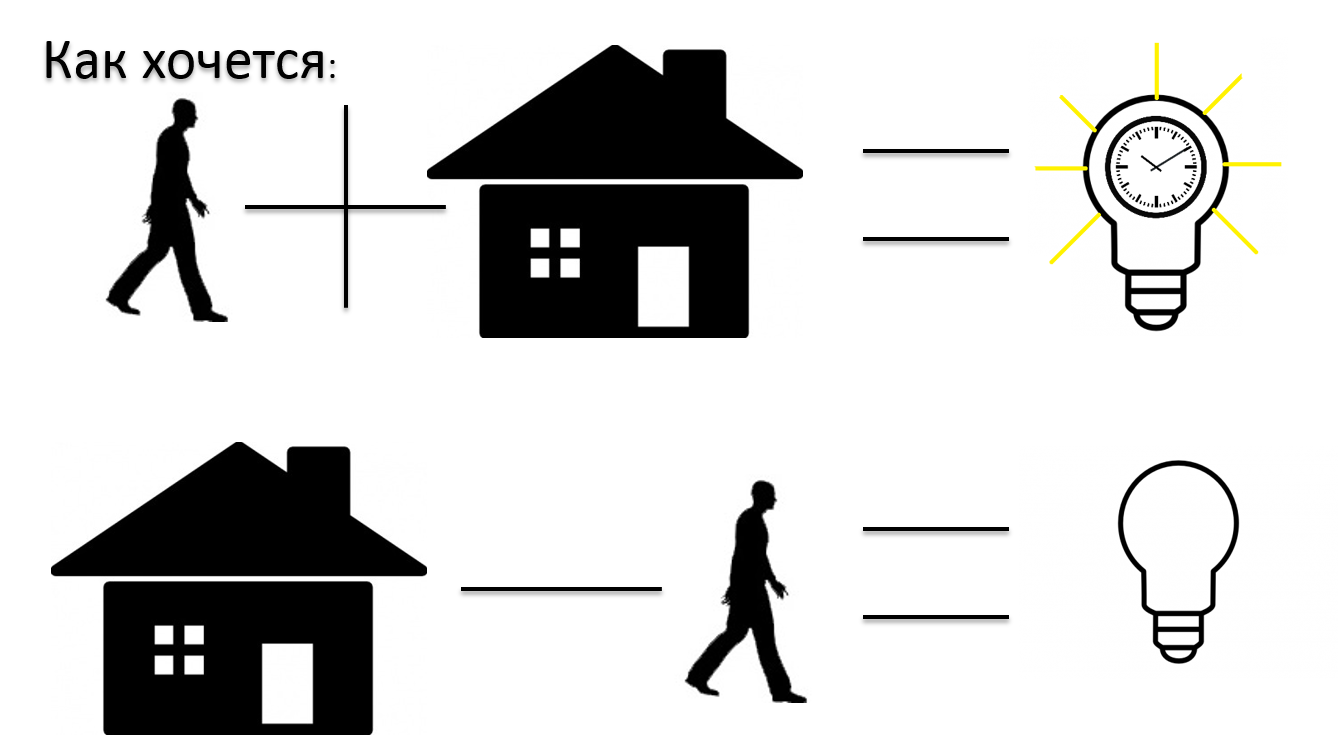
What in my understanding means the smart Internet of things? This is the Internet of Things, which will allow to change the paradigm of achieving the result: I want to set goals, not ways to achieve them.
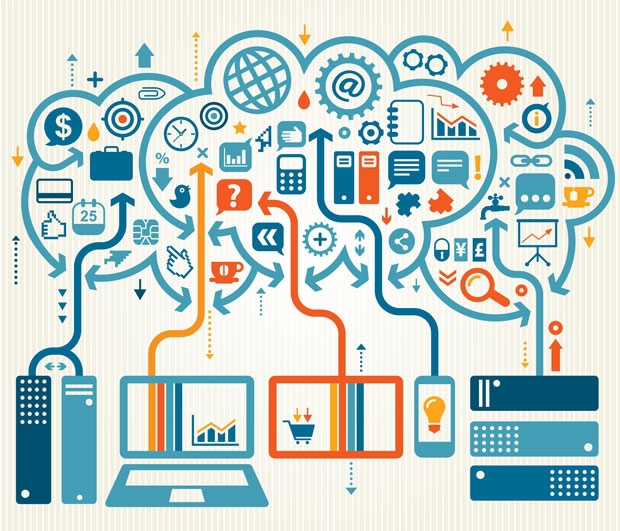
Firstly, multi-agent technologies - they are already everywhere and everywhere, and the Internet of things is impossible without them. Each participant from the real world (that is, each person and each device) is assigned a software agent — an object with some degree of intelligence that represents its interests in the virtual world. The virtual world can be called a somewhat improved copy of our life: there are the same participants who most often follow predetermined and well-known rules, providing reliable answers to the questions asked, honest and open - altruists, in general. At the same time, the interconnection of the real and virtual worlds is bidirectional: solutions from the virtual world are given to reality for execution, and all events in the real world (very often unforeseen) affect the virtual world.
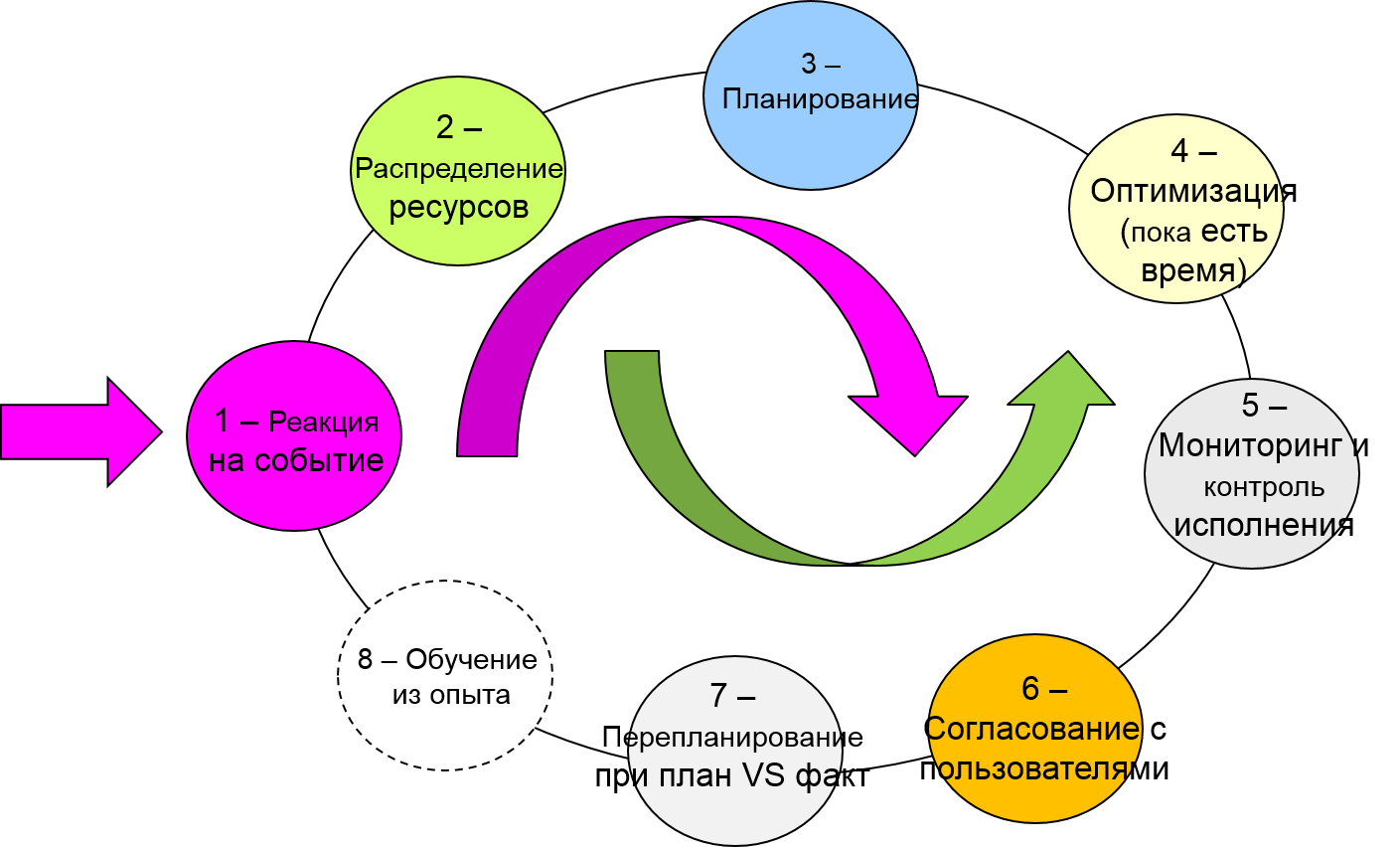
It turns out that in our “smart” house a human agent constantly communicates with agents of a coffee maker, light bulbs and other refrigerators - giving them commands and exchanging information. Something similar we see offline: for example, a person wants to run a wash. He loads things in the washing machine, wants to fall asleep powder and realizes that it is not enough for washing. Then he goes to the store, buys powder and again tries to run the wash. It is also good if he has a conditioner for laundry and no need to go to the store anymore.
We will simulate this situation from the point of view of agents, while remembering that every agent here knows all the information about his physical essence.
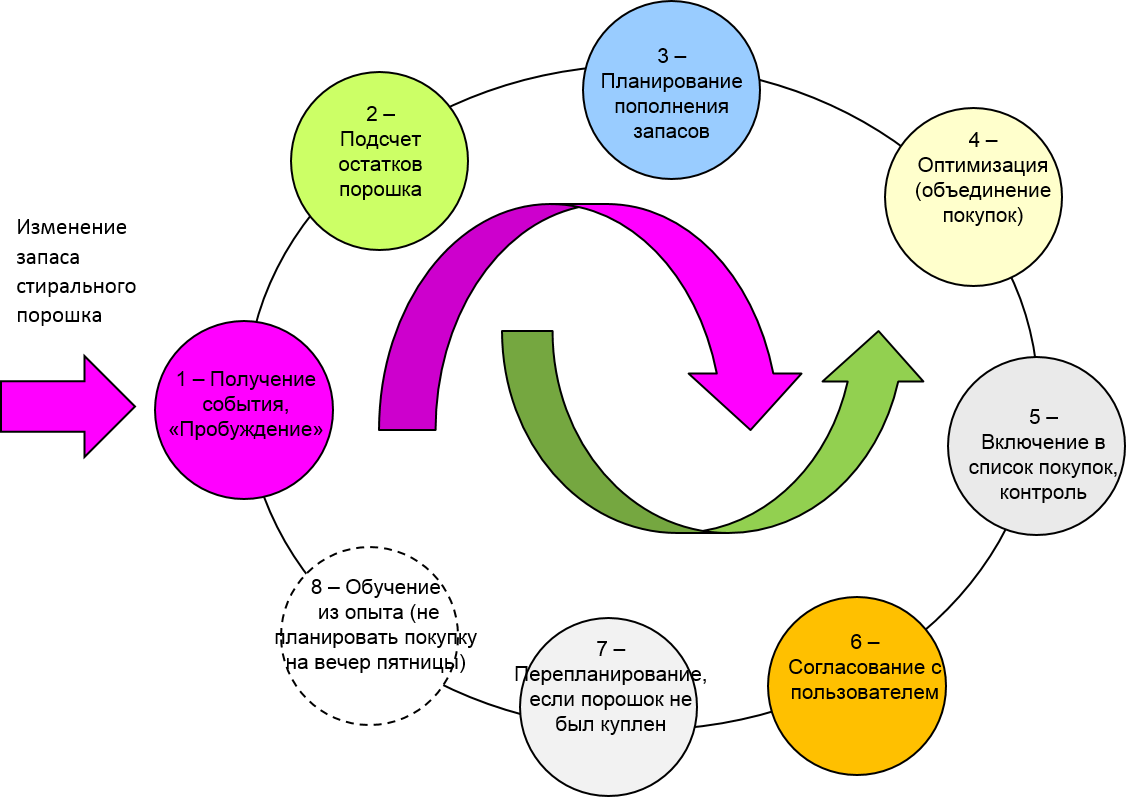
Then the agent of washing powder will ask to be bought by it even before stocks will be settled. How will he ask? Most likely, he will get into the queue to the agent of purchases and will be purchased just when a person has the physical ability to bring it - or even delivery is ordered, without human intervention. Is it convenient? Yes. Is it difficult? Also yes. Is it possible? And yes again.
All this seems too distant future. But think of such a wonderful thing as ontology. This is a relatively universal and machine-readable way of representing knowledge, and the knowledge there can be described very different. In ontology, we can describe important concepts for us, describe logical rules — and our intellectual agents use this knowledge to achieve and interact goals.
Is it possible to develop one universal ontology, which will contain all the knowledge necessary for the smart Internet of things? Maybe yes. But what should be the scope of this ontology, it is scary to even imagine. It seems much simpler to support ontologies of subject areas - and, if necessary, match between them.
It turns out that the user can create an ontology at home, an ontology of the workspace - and the data described in them must have a match. With this approach, it turns out that we can have both a “smart” office and a “smart” house.
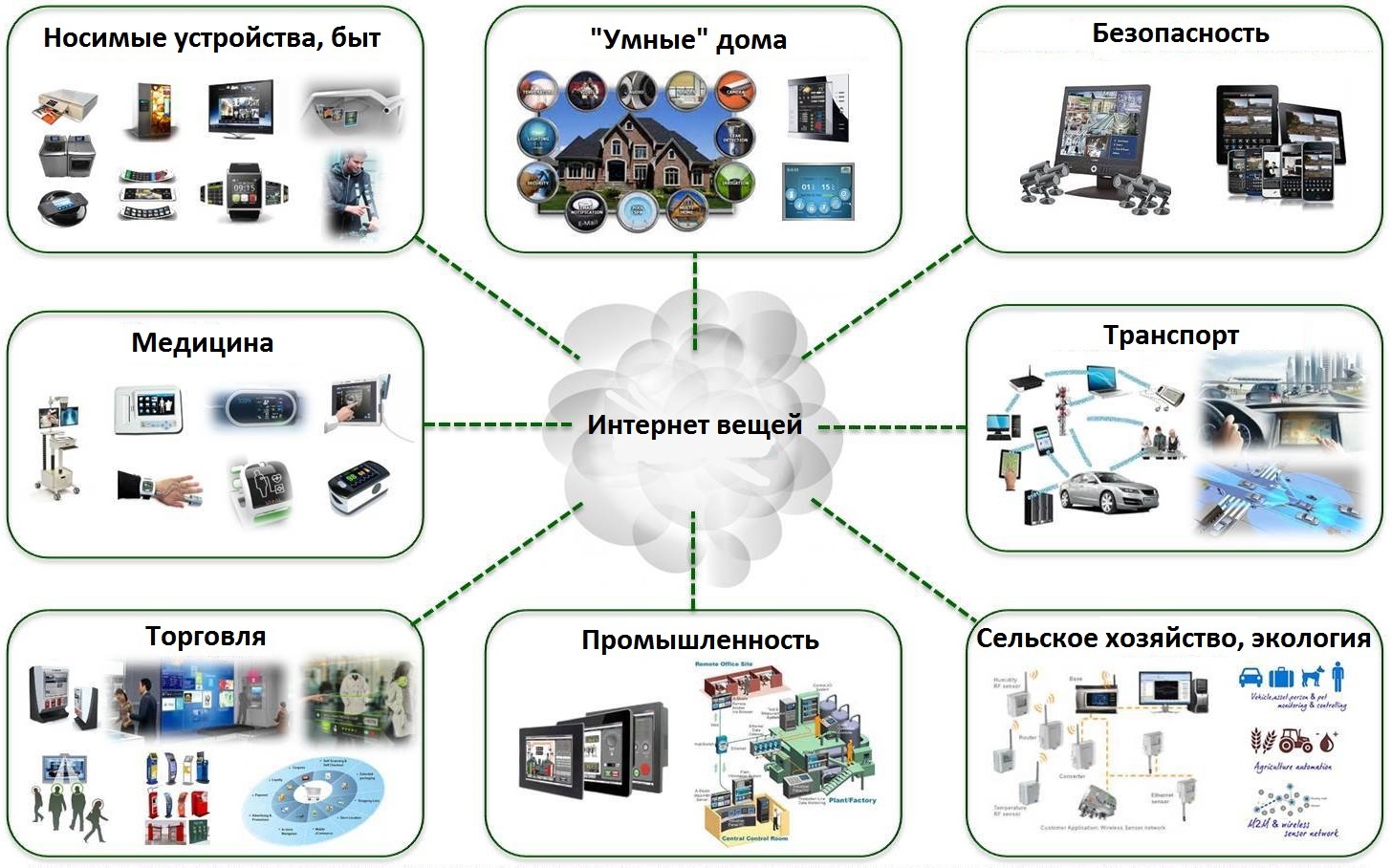
The most frequent way to use ontologies is only a way to store knowledge that is rigidly structured. Moreover, this knowledge, as a rule, speaks only of a certain essence of the physical world. And why not go further and not keep in ontologies and the rules of interaction, the logic of the smart Internet of things? In practice, this might look like this: when creating an agent, it looks at the entity to which it belongs. For a correct understanding of the properties of this entity, the agent should refer to the ontology - from there he will gather information about what this entity can do, what its needs are. Does he know how to achieve these needs, how to apply her abilities? This information also lies in the ontology! Consider an example - the purchase of air conditioning. When an air conditioner is connected to a common network, a software agent appears. This agent may know about his destination. Then it is enough for him to declare himself: “I am an agent of an air conditioner! I can cool! I want to waste energy! I can break! I want prophylaxis once a year! ”

These messages should be received by all interested participants - for example, an agent at home who is responsible for the consumption of electricity. Further, these two agents will have to agree on energy consumption in the house - the Internet of things should be economical. At the same time, the agent of the air conditioner can affect other processes that consume energy - in cases when maintaining a high temperature at home has a high priority.
The conditioner agent himself may need information. For example, it would be nice to take into account the current temperature outside the window and the forecast for a day or two: then you can not cool the house in the heat before a strong cooling. How can I get the necessary data? We must learn from the ontology, who can provide them.
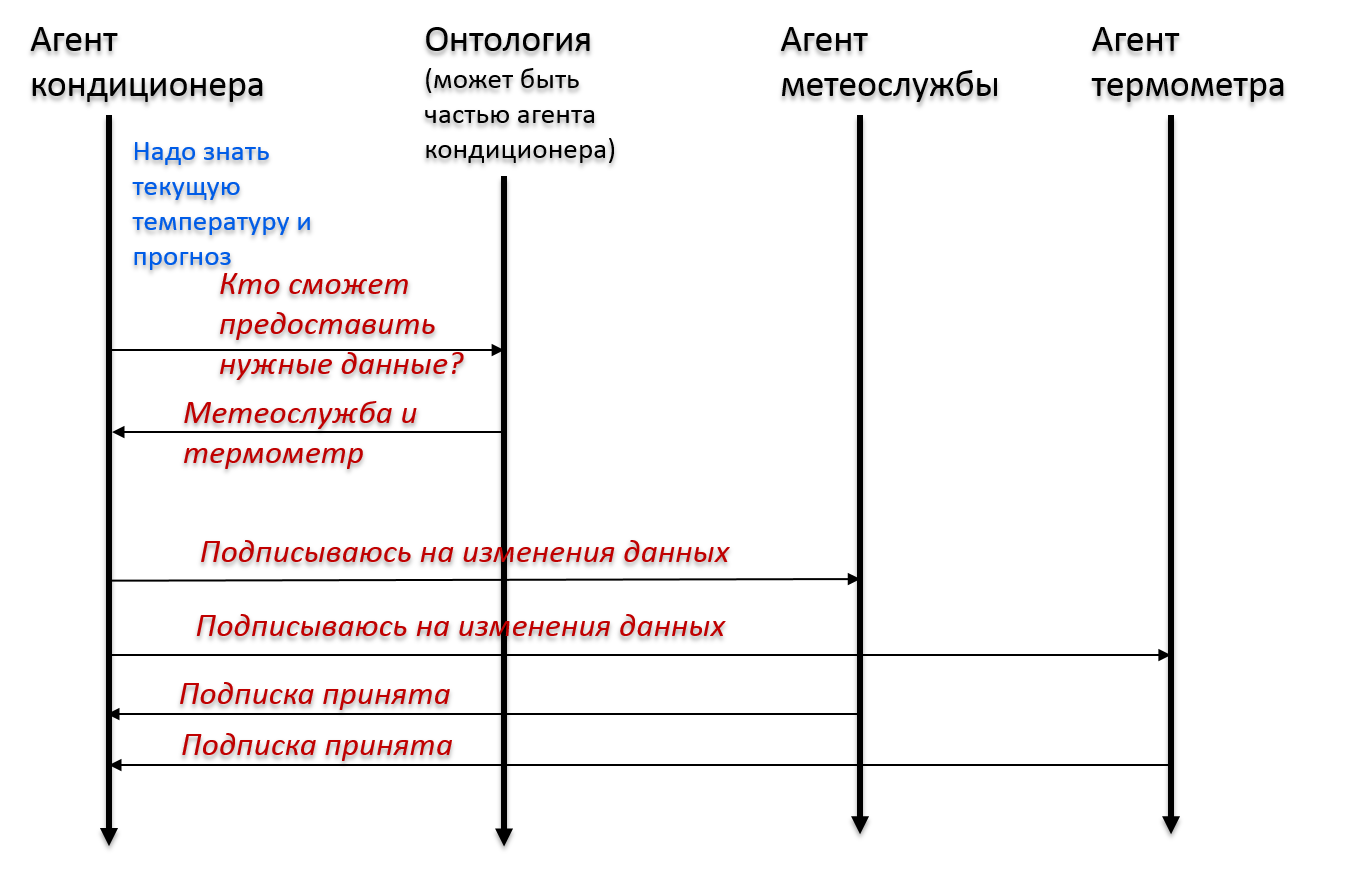
All the examples above are about the Internet of things in everyday life, about smart homes. But this is not the only area of application of such powerful technologies. Companies are already showing great interest in the Internet of things. So, Airbus sees IoT as one of the important technologies in its report on future enterprises.
Let's try to determine how the Internet of things can be used in modern enterprises. At such enterprises, as a rule, there are many different machines, many different orders for production, many different technological processes. In general, there are many different things. And, of course, in the intelligent systems of the Internet of things of these enterprises there will be many different agents. All these agents are required to enter a single information space - then the application of the Internet of things will allow to show higher efficiency. Consider an example - an agent of an order for production of products wants to be fulfilled. To do this, he needs to find free workers - and the search must start from his shop! And if there are no free workers in the workshop, everyone has high employment, then it would be logical to try to find these people somewhere else. To find a free labor force with certain competencies, you need to understand, and where to look for it at all. For this, it is enough to “only” turn to ontology, which will tell you in which workshop workers with the necessary capabilities live. And after the answer, start communicating with these workshops and try to find employees to fulfill the order.
Another example is the machine agent, who himself becomes proactive and looks for a job. This agent needs to understand what orders he can carry out - for this he needs information about orders and technological processes of their execution. If he already has such information, the machine agent can determine from the ontology who decides on the planning of these orders - and try to entice them to him. As a rule, the decision can be made either by the order itself, or by the manager of this order - a person.
It is worth noting that in the described intellectual Internet of things, a person is a full participant in all processes - he constantly sees relevant information, can consider the price of the products made to be truly honest. At the same time, the final word in decision-making may remain behind him - but he will be provided with high-quality support for this adoption, and the decision will be completely transparent and flexible.
In the 80s of the last century, Marshal of the Soviet Union N.V. Ogarkov formulated a network-centric approach to the conduct of hostilities (and in the USA these ideas were developed thanks to Vice-Admiral of the Navy Arthur Sebrovski and Professor John Gartsk). According to this approach, all resources that are able to perform the task should be included in the same information network and be able to exchange information to perform this task. Nothing like? The Internet of Things is an extremely logical application of the network-centric approach, because it uses modern information technologies to integrate distributed elements into a global system capable of adapting to the changing conditions of the external world.
The Internet of Things is to be, no one doubts this. Whether to be a clever Internet of things is a big question, but I would like it to be. The companies involved in the development of software and hardware for the Internet of things can affect this situation. How do I see this impact? It would be desirable that there should be uniform and intelligible standards that will be applicable anywhere and everywhere. I would like to have a single and intelligible understanding of what the Internet of things should be. I want this smart Internet of things to appear as soon as possible.
Thank!
In general, the history of the Internet can be divided into 4-5 stages, now we are in the era of the Internet of things (Internet of things, IoT). Briefly, it can be described as follows: an increase in the number of devices that interact not only with users, but also with each other. Those. each coffee maker has access to the network - but this is why it needs this access, only to be solved.

The emergence of the Internet of things is quite an expected step, because laziness is the engine of progress. Why go to the TV to switch channels, if you can come up with a remote control, why press a button on the coffee maker, if you can do it in a smartphone or set up a rule so that coffee pours itself ... Is it convenient? What happens if a person is not at home or doesn’t need light at a set time?
')


The house was not “smart,” because such an approach makes little difference to the situation: a person still has to control everything, he is the control center of everything. It turns out that this is “only” automation. At the same time, I perfectly appreciate the power of progress that led to it. Just want something more, you need a “smart” Internet.

What in my understanding means the smart Internet of things? This is the Internet of Things, which will allow to change the paradigm of achieving the result: I want to set goals, not ways to achieve them.
- The smart Internet of things - the constant support of a person with objects that surround him.
- The smart Internet of things is the transparency of processes, it is a result orientation.
- The smart Internet of things is not to say how to do it, but what should happen.

How to achieve this technically?
Firstly, multi-agent technologies - they are already everywhere and everywhere, and the Internet of things is impossible without them. Each participant from the real world (that is, each person and each device) is assigned a software agent — an object with some degree of intelligence that represents its interests in the virtual world. The virtual world can be called a somewhat improved copy of our life: there are the same participants who most often follow predetermined and well-known rules, providing reliable answers to the questions asked, honest and open - altruists, in general. At the same time, the interconnection of the real and virtual worlds is bidirectional: solutions from the virtual world are given to reality for execution, and all events in the real world (very often unforeseen) affect the virtual world.
How agents live and work
The life cycle of agents is quite simple. First, they perceive information from the outside world. Then it needs to be processed, i.e. plan some actions. Well, the actions have to be done - by giving the appropriate commands to the real world.
It turns out that in our “smart” house a human agent constantly communicates with agents of a coffee maker, light bulbs and other refrigerators - giving them commands and exchanging information. Something similar we see offline: for example, a person wants to run a wash. He loads things in the washing machine, wants to fall asleep powder and realizes that it is not enough for washing. Then he goes to the store, buys powder and again tries to run the wash. It is also good if he has a conditioner for laundry and no need to go to the store anymore.
We will simulate this situation from the point of view of agents, while remembering that every agent here knows all the information about his physical essence.

Then the agent of washing powder will ask to be bought by it even before stocks will be settled. How will he ask? Most likely, he will get into the queue to the agent of purchases and will be purchased just when a person has the physical ability to bring it - or even delivery is ordered, without human intervention. Is it convenient? Yes. Is it difficult? Also yes. Is it possible? And yes again.
All this seems too distant future. But think of such a wonderful thing as ontology. This is a relatively universal and machine-readable way of representing knowledge, and the knowledge there can be described very different. In ontology, we can describe important concepts for us, describe logical rules — and our intellectual agents use this knowledge to achieve and interact goals.
Is it possible to develop one universal ontology, which will contain all the knowledge necessary for the smart Internet of things? Maybe yes. But what should be the scope of this ontology, it is scary to even imagine. It seems much simpler to support ontologies of subject areas - and, if necessary, match between them.
It turns out that the user can create an ontology at home, an ontology of the workspace - and the data described in them must have a match. With this approach, it turns out that we can have both a “smart” office and a “smart” house.

Ontology for work logic
The most frequent way to use ontologies is only a way to store knowledge that is rigidly structured. Moreover, this knowledge, as a rule, speaks only of a certain essence of the physical world. And why not go further and not keep in ontologies and the rules of interaction, the logic of the smart Internet of things? In practice, this might look like this: when creating an agent, it looks at the entity to which it belongs. For a correct understanding of the properties of this entity, the agent should refer to the ontology - from there he will gather information about what this entity can do, what its needs are. Does he know how to achieve these needs, how to apply her abilities? This information also lies in the ontology! Consider an example - the purchase of air conditioning. When an air conditioner is connected to a common network, a software agent appears. This agent may know about his destination. Then it is enough for him to declare himself: “I am an agent of an air conditioner! I can cool! I want to waste energy! I can break! I want prophylaxis once a year! ”

These messages should be received by all interested participants - for example, an agent at home who is responsible for the consumption of electricity. Further, these two agents will have to agree on energy consumption in the house - the Internet of things should be economical. At the same time, the agent of the air conditioner can affect other processes that consume energy - in cases when maintaining a high temperature at home has a high priority.
The conditioner agent himself may need information. For example, it would be nice to take into account the current temperature outside the window and the forecast for a day or two: then you can not cool the house in the heat before a strong cooling. How can I get the necessary data? We must learn from the ontology, who can provide them.

Is the smart Internet of things just a smart home?
All the examples above are about the Internet of things in everyday life, about smart homes. But this is not the only area of application of such powerful technologies. Companies are already showing great interest in the Internet of things. So, Airbus sees IoT as one of the important technologies in its report on future enterprises.
Let's try to determine how the Internet of things can be used in modern enterprises. At such enterprises, as a rule, there are many different machines, many different orders for production, many different technological processes. In general, there are many different things. And, of course, in the intelligent systems of the Internet of things of these enterprises there will be many different agents. All these agents are required to enter a single information space - then the application of the Internet of things will allow to show higher efficiency. Consider an example - an agent of an order for production of products wants to be fulfilled. To do this, he needs to find free workers - and the search must start from his shop! And if there are no free workers in the workshop, everyone has high employment, then it would be logical to try to find these people somewhere else. To find a free labor force with certain competencies, you need to understand, and where to look for it at all. For this, it is enough to “only” turn to ontology, which will tell you in which workshop workers with the necessary capabilities live. And after the answer, start communicating with these workshops and try to find employees to fulfill the order.
Another example is the machine agent, who himself becomes proactive and looks for a job. This agent needs to understand what orders he can carry out - for this he needs information about orders and technological processes of their execution. If he already has such information, the machine agent can determine from the ontology who decides on the planning of these orders - and try to entice them to him. As a rule, the decision can be made either by the order itself, or by the manager of this order - a person.
It is worth noting that in the described intellectual Internet of things, a person is a full participant in all processes - he constantly sees relevant information, can consider the price of the products made to be truly honest. At the same time, the final word in decision-making may remain behind him - but he will be provided with high-quality support for this adoption, and the decision will be completely transparent and flexible.
Network centric principle
Of course, all our areas of life (in which, I am sure, the Internet of things will be) will intersect closely. It is imperative that the intersection of such areas be viable and useful to the user. After all, if on our our Internet each area will use its own standards of interaction, it will not lead to anything good.In the 80s of the last century, Marshal of the Soviet Union N.V. Ogarkov formulated a network-centric approach to the conduct of hostilities (and in the USA these ideas were developed thanks to Vice-Admiral of the Navy Arthur Sebrovski and Professor John Gartsk). According to this approach, all resources that are able to perform the task should be included in the same information network and be able to exchange information to perform this task. Nothing like? The Internet of Things is an extremely logical application of the network-centric approach, because it uses modern information technologies to integrate distributed elements into a global system capable of adapting to the changing conditions of the external world.
Brief conclusions
The Internet of Things is to be, no one doubts this. Whether to be a clever Internet of things is a big question, but I would like it to be. The companies involved in the development of software and hardware for the Internet of things can affect this situation. How do I see this impact? It would be desirable that there should be uniform and intelligible standards that will be applicable anywhere and everywhere. I would like to have a single and intelligible understanding of what the Internet of things should be. I want this smart Internet of things to appear as soon as possible.
Thank!
Source: https://habr.com/ru/post/259243/
All Articles